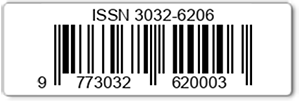The Influence Of Profitability, Liquidity And Company Growth On Stock Prices In Construction Services Companies Listed On The Indonesian Stock Exchange Period 2019-2022
Keywords:
Price Earning Ratio (PER), Current Ratio (CR), Assets Growt Ratio (AGR), Closing Price, Stock PriceAbstract
he aim of this research is to determine and analyze the effects of profitability, liquidity and company growth on stock prices. The location of this research is a Construction Services Company listed on the Indonesia Stock Exchange. The profitability variable is measured by the price earnings ratio, the liquidity variable is determined by the current ratio and the company growth variable is measured by the rationality of asset growth. Meanwhile, share prices are measured by closing prices. The companies met the sampling criteria, namely 16 companies, the period taken was from 2019 to 2022, namely 4 years. Thus, there are many samples, namely 64 company financial reports. The analytical method used is panel data regression analysis. The results show that the price partial return ratio (PER) has a positive and significant effect on stock prices. The current ratio (CR) has a positive but insignificant effect on stock prices. Asset Growth Ratio (AGR) has a positive and significant effect on share prices. Meanwhile, simultaneously the partial price profit ratio (PER), Current ratio (CR) and asset growth ratio (AGR) have a positive and significant effect on stock prices. The contribution of influence of all these variables is 55.32%.
References
Abimantrana, A. P. (2013). The Influence of Financial Performance on Stock Price Around Publication Date of Financial Statements (A Study in Food & Beverages Companies Listed on BEI 2010-2012). Jurnal Akuntansi Internasional, 2(2), 1–11.
Azis, M., Minarti, S., & Nadir, M. (2015). Manajemen Investasi Fundamental, Teknikal, Perilaku Investor dan Return Saham. Ed. 1. Deepublish.
Budiman, R. (2018). Rahasia Analisis Fundamental Saham. PT Elex Media Komputindo.
Darmadji, T., & Faksruddin, H. M. (2012). Pasar Modal di Indonesia. Edisi Ketiga. Salemba Empat.
Daulay, R., Kurnia, E., & Maulana, I. (2019). Analisis Faktor-Faktor Yang Mempengaruhi Kinerja Karyawan Pada Perusahaan Daerah di Kota Medan. Proseding Seminar Nasional Kewirausahaan, 1(1), 209–218.
Fahmi, I. (2012). Manajemen Kinerja. Alfabeta.
Ghozali, I. (2013). Aplikasi Analisis Multivariate dengan Program IBM SPSS 21 Update PLS Regresi. Badan Penerbit Universitas Diponegoro.
Hery. (2015). Analisis Laporan Keuangan. Edisi 1. Center For Academic Publishing Services.
Octaviani, S., & Komalasari, D. (2017). Pengaruh Likuiditas, Profitabilitas, dan Solvabilitas Terhadap Harga Saham (Studi Kasus Pada Perusahaan Perbankan yang Terdaftar di Bursa Efek Indonesia). Jurnal Akuntansi, 3(2), 77–89.
Prasetyo, A. H. (2011). Manajemen Keuangan Bagi Manajer Non Keuangan. Cetakan 1. PPM.
Purba, R. B., & Umar, H. (2021). Kualitas Audit & Deteksi Korupsi. Merdeka Kreasi Group.
Purba, R. B. (2023). Teori Akuntansi: Sebuah Pemahaman untuk Mendukung Penelitian di Bidang Akuntansi. Merdeka Kreasi Group.
Ramadona, A. (2016). Pengaruh Struktur Kepemilikan Manajerial, Struktur Kepemilikan Institusional, Ukuran Perusahaan dan Leverage Terhadap Konservatisme Akuntansi. Jurnal Online Mahasiswa Fakultas Ekonomi, 3(1).
Sartono, A. (2010). Manajemen Keuangan Teori dan Aplikasi. Edisi 4. BPFE.
Sugiyono. (2016). Metode Penelitian Kuantitatif, Kualitatif dan R&D. CV Alfabeta.
Sugiyono. (2018). Metode Penelitian Pendidikan (Pendekatan Kuantitaif, Kualitatif, dan R&D). CV Alfabeta.
Supriyono, R. A. (2018). Akuntansi Keperilakuan. Gadjah Mada University Press.
Umar, H., Purba, R. B., & Nasution, M. D. T. P. (2021). Metode Penelitian Ilmiah (Vol. 1). Penerbit Universitas Trisakti.
Downloads
Published
Issue
Section
License

This work is licensed under a Creative Commons Attribution 4.0 International License.
Simposium Ilmiah Akuntansi under the terms of a Creative Commons Attribution 4.0 International License / CC BY 4.0 This license permits anyone to copy and redistribute this material in any form or format, compose, modify, and make derivative works of this material for any purpose, including commercial purposes, so long as they include credit to the Author of the original work.










